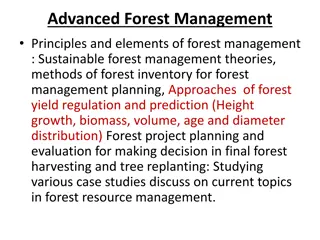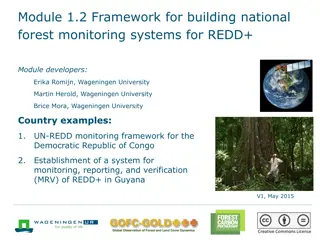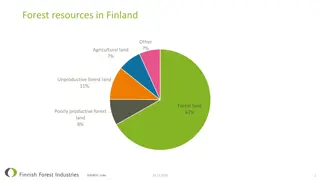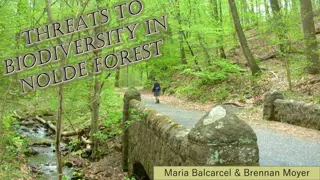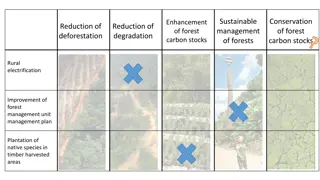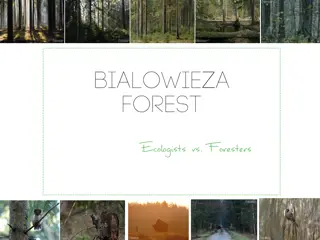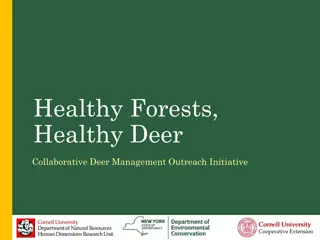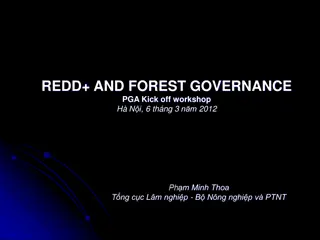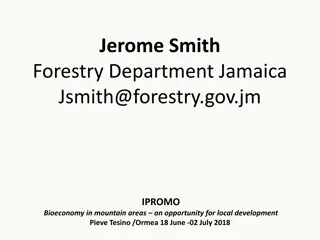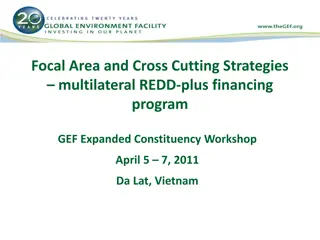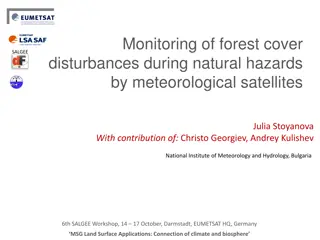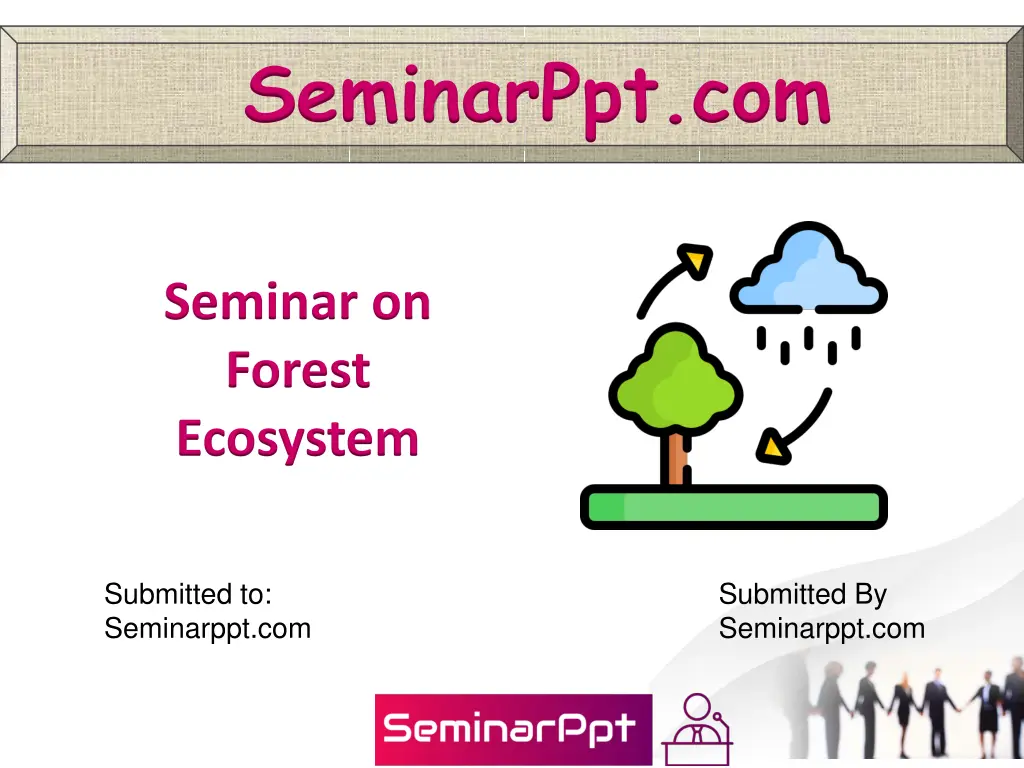
Exploring Forest Ecosystems: Types, Components, and Characteristics
Discover the diverse world of forest ecosystems through this seminar presentation. Learn about different types of forest ecosystems, their components, characteristics, and significance. From tropical rainforests to temperate deciduous forests, delve into the intricate relationships within these natural habitats.
Download Presentation

Please find below an Image/Link to download the presentation.
The content on the website is provided AS IS for your information and personal use only. It may not be sold, licensed, or shared on other websites without obtaining consent from the author. If you encounter any issues during the download, it is possible that the publisher has removed the file from their server.
You are allowed to download the files provided on this website for personal or commercial use, subject to the condition that they are used lawfully. All files are the property of their respective owners.
The content on the website is provided AS IS for your information and personal use only. It may not be sold, licensed, or shared on other websites without obtaining consent from the author.
E N D
Presentation Transcript
SeminarPpt.com Seminar on Forest Ecosystem Submitted to: Seminarppt.com Submitted By Seminarppt.com
Table Contents Definition Introduction Types of Forest Ecosystem Components of Forest Ecosystem Characteristics of Forest Ecosystem Conclusion 2
Definition A forest ecosystem is an ecosystem of forests and resources. Forests are renewable natural resources 3
Introduction Forests are formed by a group of plants that are structurally defined by their trees, shrubs, herbs, climbers, and ground cover. Soil, animals, insects, microorganisms, and birds are the most important interacting units of a forest ecosystem. In India, the forests occupy about 18-20% of the total land area. 4
Types of Forest Ecosystem Tropical Evergreen Rainforest: Only a small percentage of tropical forests are rainforests where average rainfall is 80- 400 inches in a year. This forest is characterised by deep and dense vegetation consisting of tall trees reaching different levels. 6
Types of Forest Ecosystem Tropical Deciduous Rainforest: The main characteristic of tropical deciduous rainforest are broad-leaved trees along with dense bushes, shrubs, etc. Two main seasons summer and winter are distinctly visible there. This type of forest is found in many parts of the world. 7
Types of Forest Ecosystem Temperate Evergreen Forest: Temperate evergreen forest is a type of forest that is characterised by a smaller number of trees but an adequate number of ferns and mosses. 8
Types of Forest Ecosystem Temperate Deciduous Forest: Temperate deciduous forest evolves in the moist temperate region with sufficient rainfall. Here also, winter and summer are well defined, and trees shed their leaves during winter. Dominant trees are maple, oak, peach, etc. 9
Types of Forest Ecosystem Taiga/Boreal: Situated just south of the Tundra, Taiga is characterised by evergreen conifers. The average temperature is below the freezing point for almost half of the year. 10
Components of Forest Ecosystem Producers: Producers can synthesise their own food by the photosynthesis process. All green plants are considered producers of the ecosystem as they convert sunlight into the chemical energy of food. 11
Components of Forest Ecosystem Primary Consumers: Since the consumers can not prepare their own food, they depend on producers. Herbivorous animals get their food by eating the producers (plants) directly. Examples of primary consumers are grasshoppers, deer, etc. Secondary Consumers: Secondary consumers draw their food from primary consumers. 12
Components of Forest Ecosystem Decomposers: The decomposers of the forest ecosystem break down dead plants and animals, returning the nutrients to the soil so that they can be used by the producers. Apart from bacteria, ants and termites are important decomposers in the Amazon rainforest. 13
Components of Forest Ecosystem Nutrient Cycle: The nutrient cycle is cyclic. For the proper functioning of ecosystems, nutrients are required. Carbon, hydrogen, oxygen, and nitrogen constitute about 95% of the mass of living organisms. 14
Components of Forest Ecosystem Energy Flow: In a forest ecosystem, the grass, which draws its nutrition from sun, soil and water, is eaten by the grasshopper, which in turn is eaten by frogs, snakes, and vultures in succession (different trophic levels). 15
Characteristics of Forest Ecosystem Warm temperatures and sufficient rainfall are characteristics of forests, resulting in the formation of numerous ponds, lakes, etc. The forest maintains climate and rainfall. The forest supports many wild animals and protects biodiversity. The soil is rich in organic matter and nutrients, which support the growth of trees. 16
Conclusion Forests ecosystem are divided based on adequate rainfalls and temperature. The forest ecosystem is home to many animals and fully fills all the basic needs required such as wood, timber, medicinal plants, and so on. Forest helps in maintaining the oxygen and temperature levels of the atmosphere. 17
References Wikipedia.org Google.com Seminarppt.com Studymafia.org




